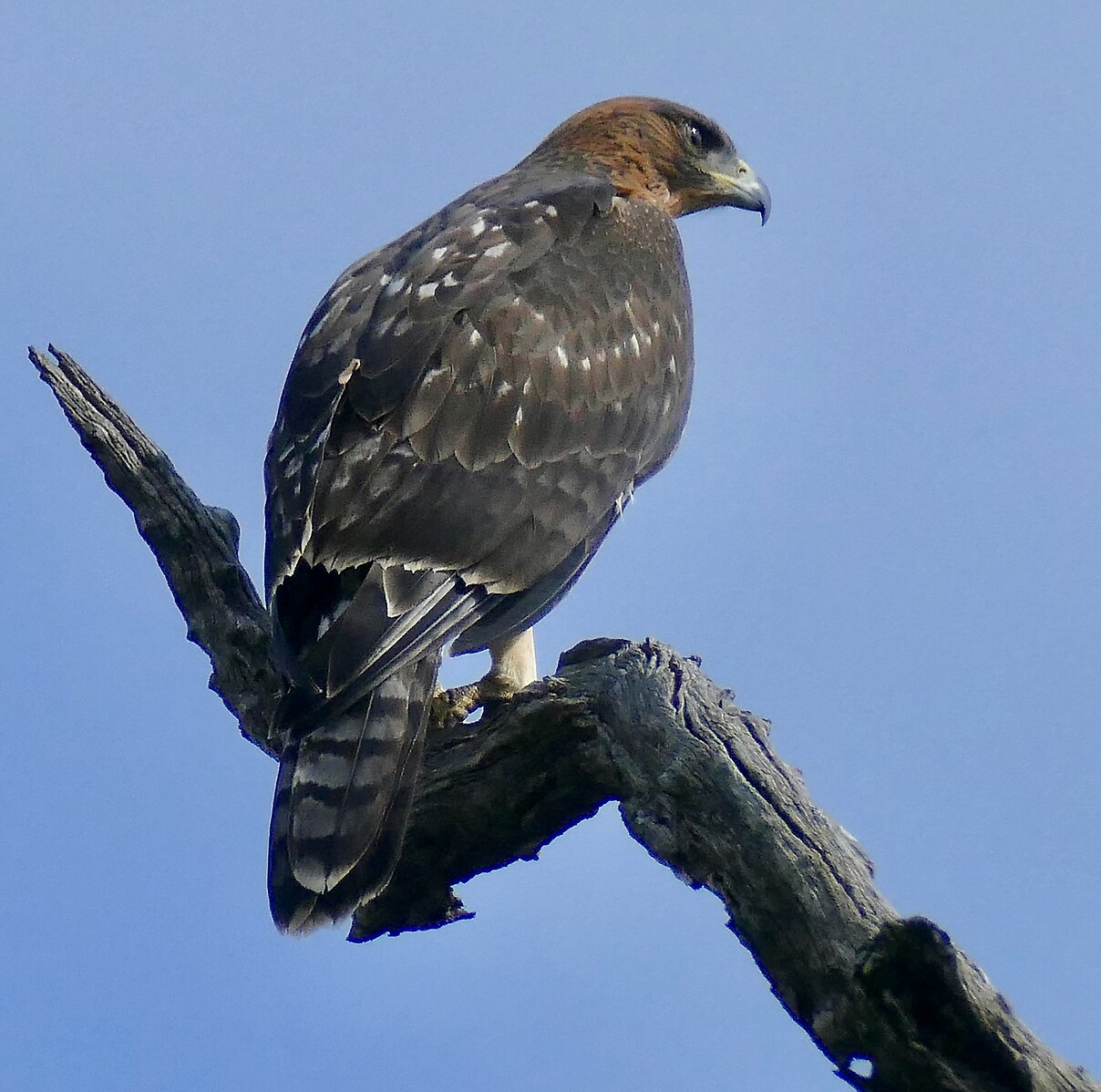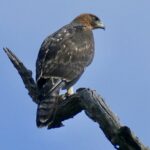African hawk eagles are powerful birds of prey that primarily feed on small to medium-sized mammals and birds. They have adapted to their surroundings by developing sharp talons and a hooked beak, which allows them to catch and kill their prey efficiently. These birds are carnivorous and can consume a large amount of food due to their high metabolism, which also means they poop frequently.
The Diet of African Hawk Eagles
The diet of African hawk eagles mainly consists of birds and mammals, with up to 86% and 70% respectively. They have been known to take down prey as large as a large male domestic cat, weighing around 4,300 g (9.5 lb), but they typically focus on smaller prey. In some cases, they may select mammals weighing more than 300 g (11 oz) up to 4,000 g (8.8 lb). Their primary avian prey includes galliforms such as helmeted guineafowl and Swainson’s spurfowl, which are similar in size to the hawk-eagle itself.
How Much Do African Hawk Eagles Eat a Day?
 Image source: African Hawk-Eagle by Bernard DUPONT
Image source: African Hawk-Eagle by Bernard DUPONT
African hawk eagles have a high metabolism and can consume a significant amount of food each day. On average, an adult African hawk eagle can eat between 500-800 grams (1.1-1.8 lbs) of food per day. This can vary depending on the size and availability of their prey, as well as the individual bird’s energy requirements.
Here’s a breakdown of the typical daily food intake for an African hawk eagle:
| Prey Type | Average Weight (g) | Daily Intake (g) |
|---|---|---|
| Small Mammals (e.g., rodents) | 300-400 | 200-300 |
| Medium-sized Mammals (e.g., hares) | 1,000-2,000 | 300-500 |
| Birds (e.g., guineafowl) | 1,000-2,000 | 200-400 |
It’s important to note that these are approximate values, and the actual food intake can vary depending on the individual bird’s needs and the availability of prey in its habitat.
Hunting Behavior and Feeding Habits
African hawk eagles are skilled hunters and use their sharp talons and hooked beak to capture and kill their prey. They typically hunt from a perch, scanning the surrounding area for potential prey. When they spot a target, they will swoop down and strike with their powerful talons, often killing the prey instantly.
After capturing their prey, African hawk eagles will often take it back to a favorite perch or nest to consume it. They will tear the prey apart with their beak and talons, consuming the meat and other edible parts. These birds are known to be efficient eaters, leaving little waste behind.
Breeding and Nesting Habits
The breeding behavior of African hawk eagles is similar to that of other eagle species, as they are monogamous and mate for life. The courting ritual involves the male and female flying around each other and making distinctive calls, followed by the male providing the female with prey before mating. The eggs are laid in clutches of one to two and are incubated for around 43 days, with both parents sharing the role.
Conservation Status and Threats
The African hawk eagle is classified as Least Concern on the IUCN Red List of Threatened Species. However, their populations are threatened by habitat loss and degradation, primarily due to deforestation and human encroachment. These birds rely on large, mature trees for nesting, and the loss of their natural habitats can have a significant impact on their populations.
In conclusion, African hawk eagles are powerful birds of prey that can consume a significant amount of food each day, ranging from 500 to 800 grams (1.1 to 1.8 lbs) on average. Their diet consists primarily of small to medium-sized mammals and birds, which they capture using their sharp talons and hooked beak. While their conservation status is currently Least Concern, their populations are threatened by habitat loss and degradation, making it important to protect their natural environments.
References:
– African hawk-eagle – Facts, Diet, Habitat & Pictures on Animalia.bio. Retrieved from https://animalia.bio/african-hawk-eagle/1000
– African Hawk-Eagle: The Ultimate Guide – Operation Migration. Retrieved from https://operationmigration.org/african-hawk-eagle-the-ultimate-guide/
– African hawk-eagle – Wikipedia. Retrieved from https://en.wikipedia.org/wiki/African_hawk-eagle


